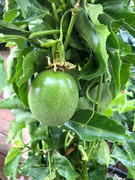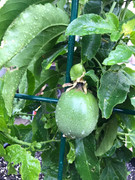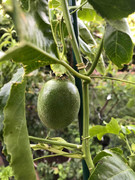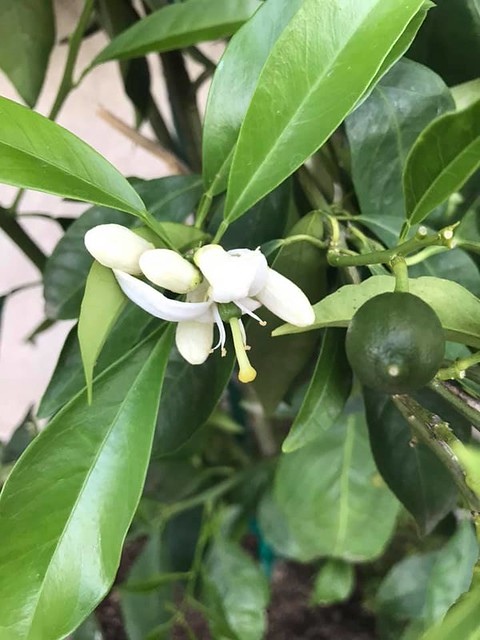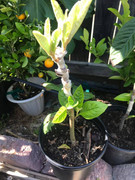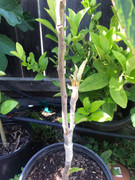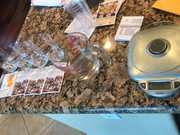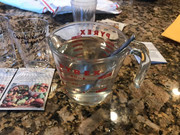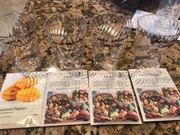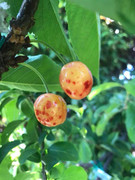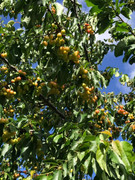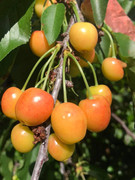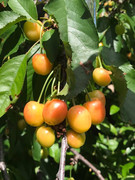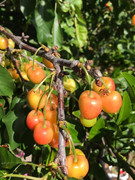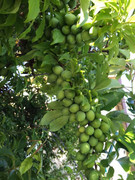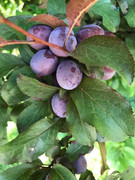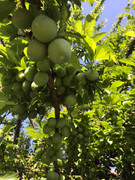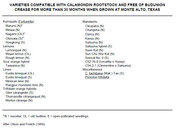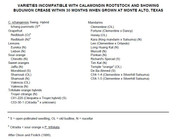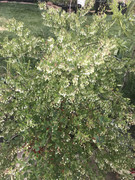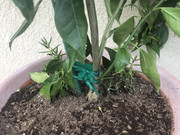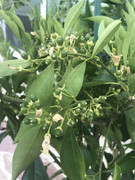Story about the **Aravaipa**:
Here's what I found out about the Aravaipa Avocado.
There's a special story about it in the Fruit Gardener which I recommend you'd subscribe if you're into fruit growing. It isn't publicly available as it is copyrighted but accessible via paid subscription.
There were many avocado trees planted in Arizona and elsewhere near the Mexico Border when parts of the US were still under Mexico, sometime in the 1700's and earlier. So it must be a long time of selection pressure for the various trial avocado plantings, by people freely coming in and out of Mexico and from Central and South America long before the US was formed.
In 1906, a rancher's family purchased the deed to his land in 1906 in the Aravaipa Canyon, now a Conservation Preserve in Arizona, and there was already a good size avocado tree growing in it. The avocado tree must have first sprouted or planted in the mid to late 1800's. The ranch is located at the bottom of a Valley, on a small mesa, just about 10 to 15 feet above the stream bed, and about 180 feet from the Aravaipa River. This means that during winter, very cold air from the mountains, being denser, would drain into this valley creating very cold freezing conditions, but the cold air would continue to drain down further into the river, away from the avocado tree, away from the ranch. According to the rancher, there are a couple of times or more that the entire mesa was flooded with 6-8 ft of water up to the trunk of the tree. Over the more than 100 years since their family acquired the land, the ranch had experienced many wintry snow storms, with regular winters of mid-20's and plummeting as low as 10 deg F. During the summer, the temperature regularly get several days of 120 deg F and sometimes weeks of temperatures above the century mark.
The tree must be at least 125 years old and survived it all to be the great and unique specimen that it is to this very day. What sets apart this tree from other cold hardy specimen is that it is both very cold hardy and heat tolerant. The tree is also salt tolerant, able to thrive in saline sodic soils of Arizona, and tolerant of root rot from the flooding and prolonged wet soils during winter. The tree just laughs off freezing events and continues to be very productive.
The tree is now regarded by Arizona residents as a Native Arizona avocado, and is related to Hass, a Guatemalan race, and avocado aficionados know very well that Guatamelan varieties typically have rough tough skins and are the most cold sensitive. So indeed this variety is truly unique in that it is very cold hardy and heat tolerant at the same time. Hass will simply burn in very hot summer temperatures or die out or severely damaged after a few frosty nights during winter.
The cultivar is just starting to become popular. In my quest for having a fruit bearing avocado tree in North California, I seek out and added this to my collection. Thanks to my friend Harvey Correia who first told me about the story of the Aravaipa and let me take a cutting of it from his tree.
One of the drawbacks to its adoption is that some say it only tasted mediocre. Most people don't want anything that isn't at least as good tasting as Hass. Julie Frink, a revered avocado guru, wasn't impressed with its flavor and at best considered it mediocre. But for our area, being mediocre is preferable to having no avocados at all. The current ranch owners of the original Aravaipa tree told that the taste is really delectable when harvested and properly ripened, and they had more sampling of the fruits than anyone else. As for me, one sample isn't enough especially if you're tasting many other avocados. A sampling through time of various harvest dates and ripening period is the best gauge for evaluating the quality of the fruits. Also the age of the tree has tremendous effect on the fruit quality, just like old vines making better wines than newer vines. I learned that as a winemaker long time ago, that you'll have to bring wine across its journey through time, and one bottle isn't enough. Flavor quality changes through time. Sometimes a slight modification in the "curing" or storage of avocados can dramatically change their flavor profile, and we don't have a clue on how to handle Aravaipa Avocado, such as optimum harvest and storage time.
I hope to get a lot of fruits this year. So I hope to evaluate it properly for my personal recommendations. Regardless of taste, it is a must have variety, at least for me as I believe that it would surely be a good source of excellent rootstock just like the Duke, that are able to tolerate salt, heat, root rot, and very cold hardy.
Unlike the Duke avocado, the Aravaipa can be be ordered online and is often available. It costs more than the typical avocado tree from big box stores as the propagators don't have the economies of scale. But also be aware that there are two types of Aravaipa being sold, one is also sold as Arizona Avocado, and is the original Aravaipa, and the other one is sold as Don Juan which many said is not the original Aravaipa, but dual labeled as such. The Don Juan is said to produce better tasting fruits than Arizona, and so must be another cultivar and I have no idea about its cold, salt, heat and rot tolerance.
Here's a video link showing that the legendary tree exists. The family who owns the ranch and the original tree has invited one of the promoters, propagators and sellers of the Aravaipa avocado. The exact location of the ranch and the tree can't be disclosed to respect the owner's privacy.
https://www.youtube.com/watch?v=SC7VtIDRaNg



